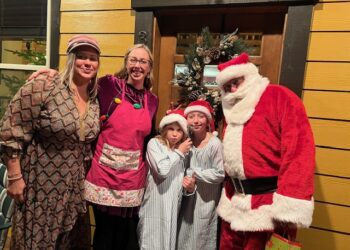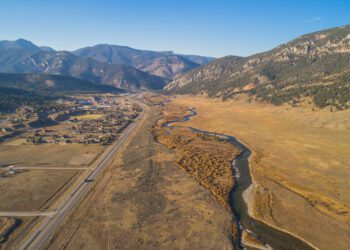By Paul Swenson EBS COLUMNIST

I remember as a kid going to the ocean and walking along the beach fascinated by all the seashells. It seemed that each one I saw I picked up, whether they were new and colorful, or old, faded, and broken. All of these shells I would bring to my Mom or Dad and they would patiently put them in a bag to take home. A lifetime later as my mom cleaned out her crawlspace she asked if I wanted all those shells back. I did not. But my passion for walking along picking up shells has not changed. Now I get them in Montana, not at a beach.
I started noticing shells as a kid in the hills around here when my family and I would go for hikes up and around Cinnamon Mountain. My parents would, as they did with shells at the beach, keep every rock I found that interested me. My Dad even packed out a couple huge rocks for me that I can barely lift as an adult. Where did they end up? In the yard, garden, mantle, or just tossed in the big pile of “Paul’s Rocks.”
Fifty years later I still have the propensity to gather shells, but now I understand their ages and the geology that placed them here.

There are a number of rock formations that contain fossils in the Big Sky region. They range from Trilobites in Cambrian limestones and shales (500 million years old), dinosaurs in the Bozeman Pass area (150 million years old), leaf and tree fossils (100 million years old), petrified wood (40 million years old), and horse, canid dog, and camel fossils (20 million years old). All one needs to know is what type of rock to look for, hard work, and some patience. But if you’re like me, it’s best to start with some easy fossil shell hunting.
The Madison Formation is a limestone that outcrops all around us. It is Mississippian in age, which means it is 360-330 million years old. At this time, paleo-Montana was on the coast of a continent that would become North America and located close to the equator. This coast was a passive environment, like what you might find now along northern and western Australia. Just as you find coral reefs in this present setting, we would have found them here in paleo-Montana 360 million years ago.

The assemblage of fossils in the Madison Formation varies where you look, but ranges from common shells (Brachiopods), sea fans (Bryozoan), sea lilies (Crinoids), several species of corals, trilobites, and fish fossils. Trilobites and fish are extremely rare to find in our locale, but in northcentral Montana there is a location called Bear Gulch where paleontologists find all kinds of different vertebrate and invertebrate fossils.

When I used to teach geology at Lone Peak High School, I would take students to these outcrops to search for the fossils identified in the photographs. For weeks leading up to these field trips, students would comment about their lack of interest in rocks. But, once they were successful at finding seashell and coral fossils, suddenly the rocks became “alive” for a lot of my students. Some of them even found fossils that I’m still jealous about. You know who you are: P.F. and C.S. One found a trilobite (rare) and one found a unique species of coral in the shape of a soccer ball, 1.5 inches across. So cool.
The fossils from the Madison Formation can be found in so many places around the region: Top of Storm Castle, Tick Ridge, Levenski Ridge, halfway up Beehive Basin, Cinnamon Mountain, most of the Taylor Range, along the Gallatin above Taylor Fork, and a host of other places.

So now that the snow is slowly disappearing it’s time to get out and explore the region. Take in the beauty of the mountains and the vistas, but occasionally look down at the ground. You might find some seashells that have been here for a very long time.
As a reminder, it is that time of year again: Tick Season. If you are hiking in an area that is frequented by deer, elk, or bighorn sheep, there is a high probability you will pick up a tick or two in the grass or bushes. Please check yourself and your pets. Usually you have plenty of time before they settle in for a meal. If you find one that has latched on, please consult a knowing individual for techniques for extraction, don’t just pull it out.
Paul Swenson has been living in and around the Big Sky area since 1966. He is a retired science teacher, fishing guide, Yellowstone guide and naturalist. Also an artist and photographer, Swenson focuses on the intricacies found in nature.











